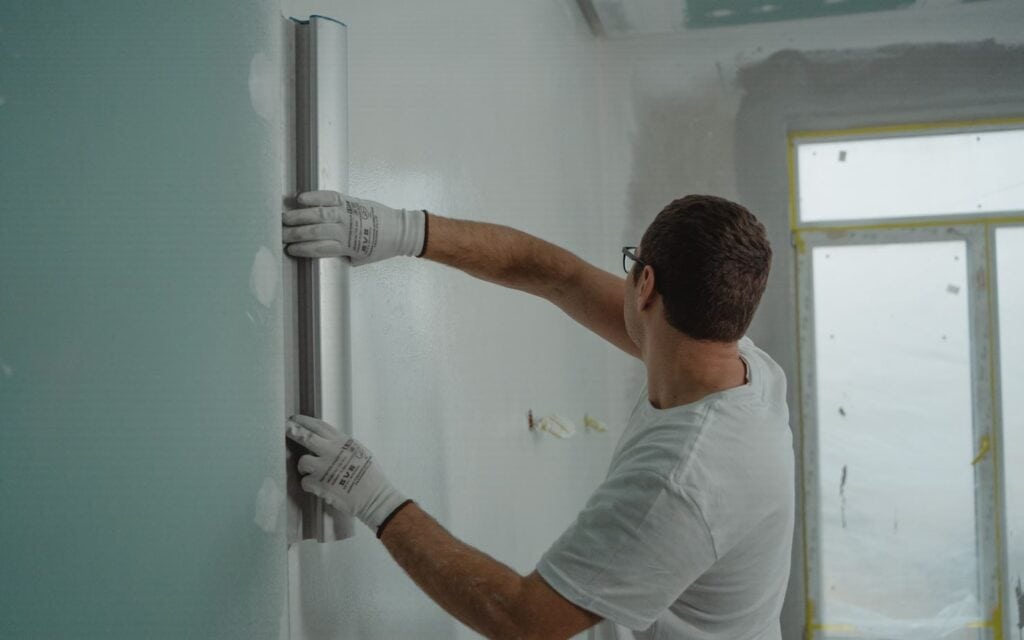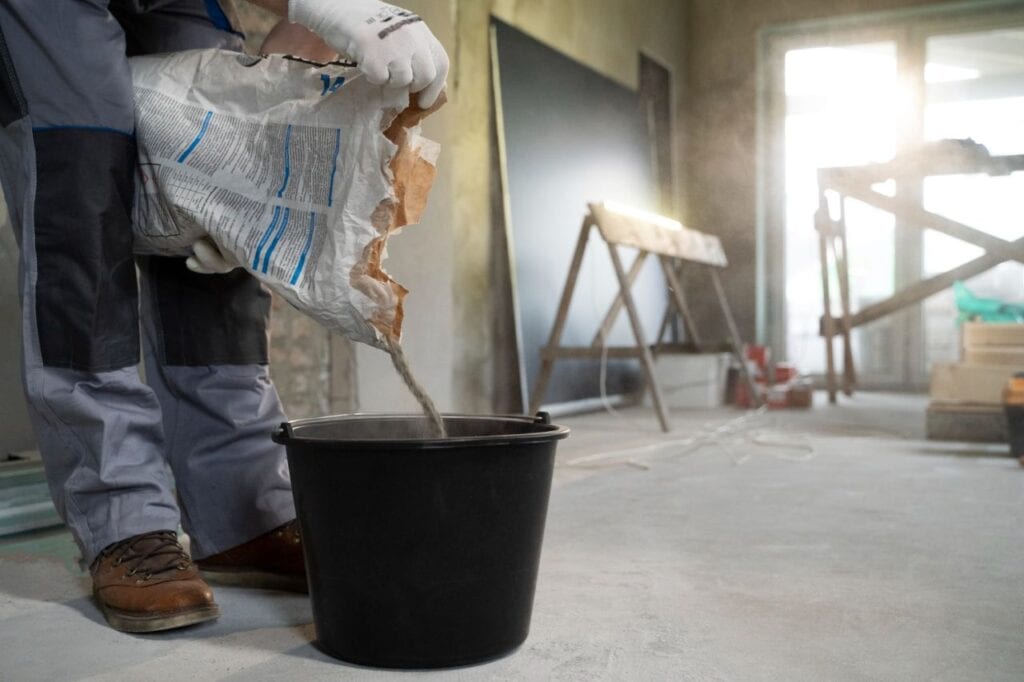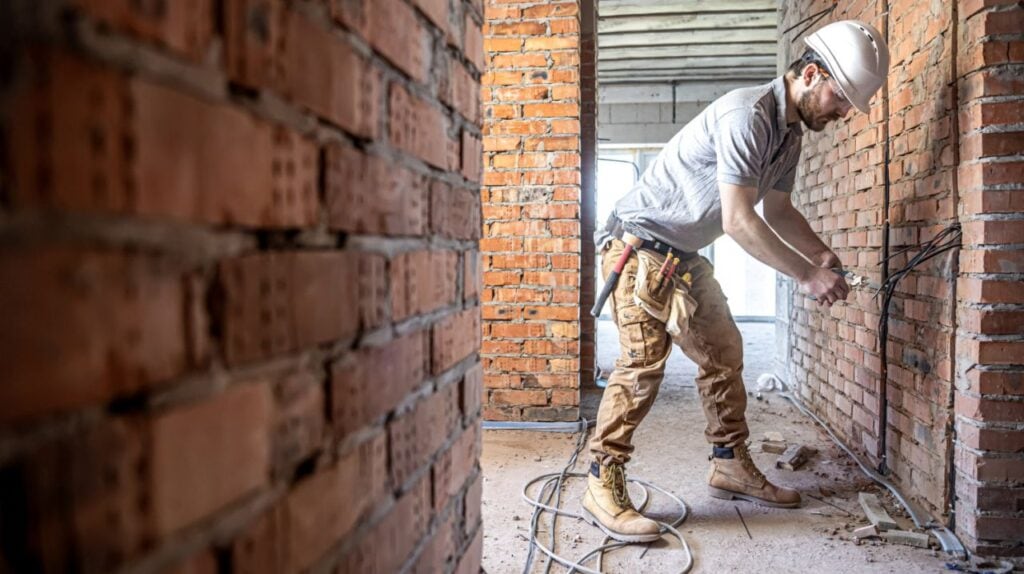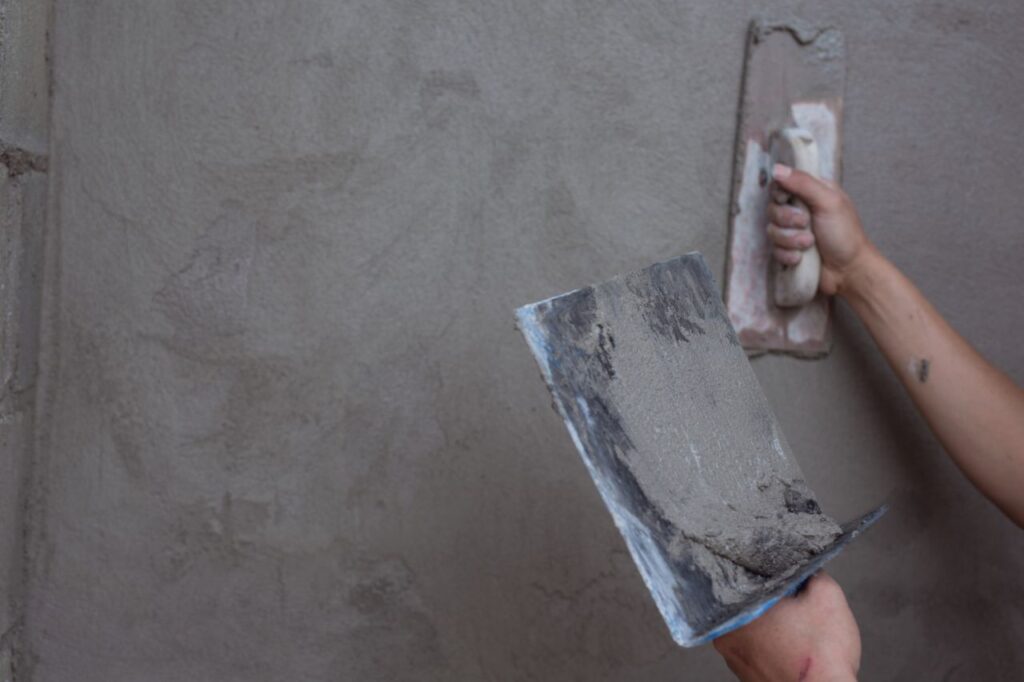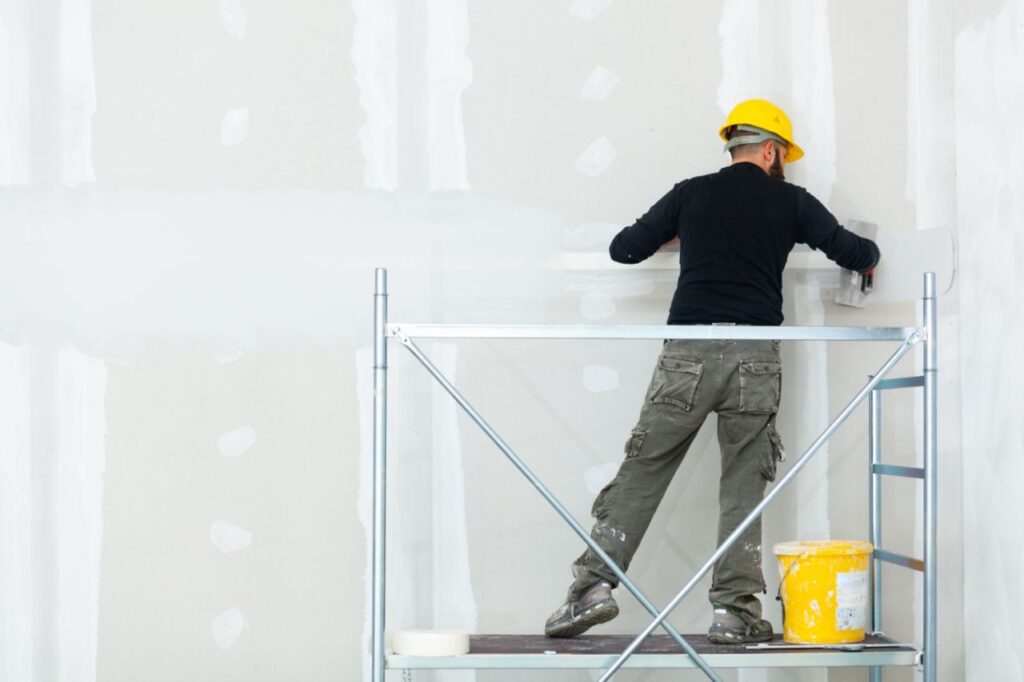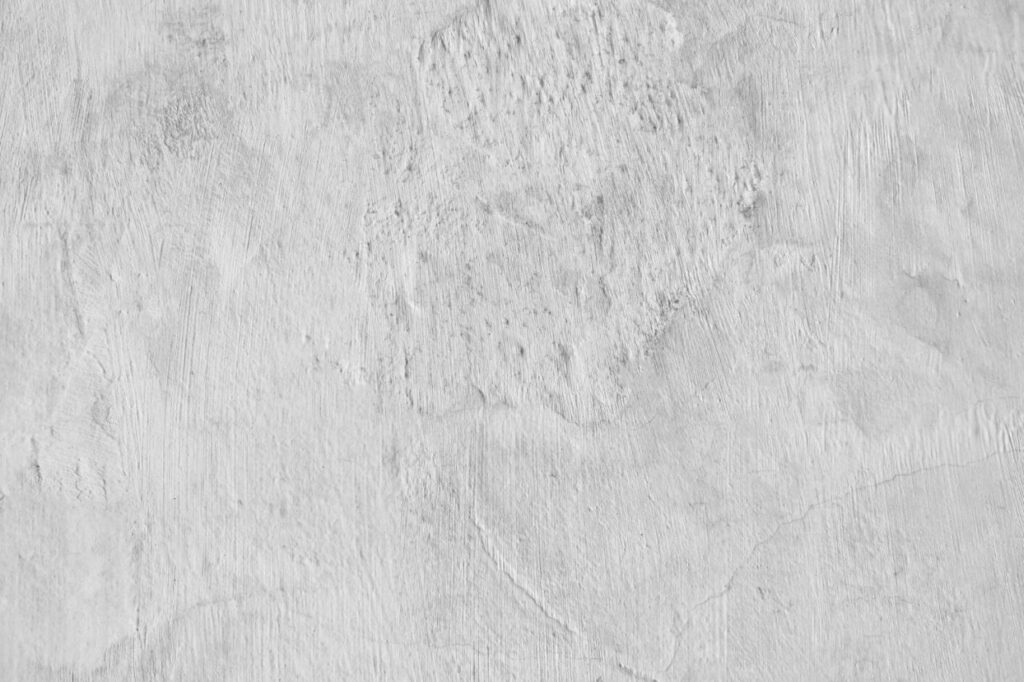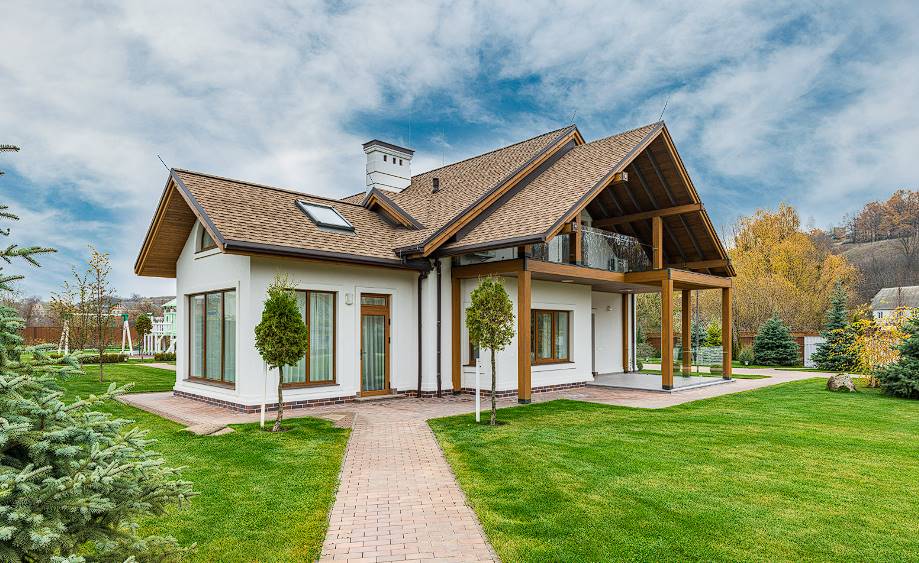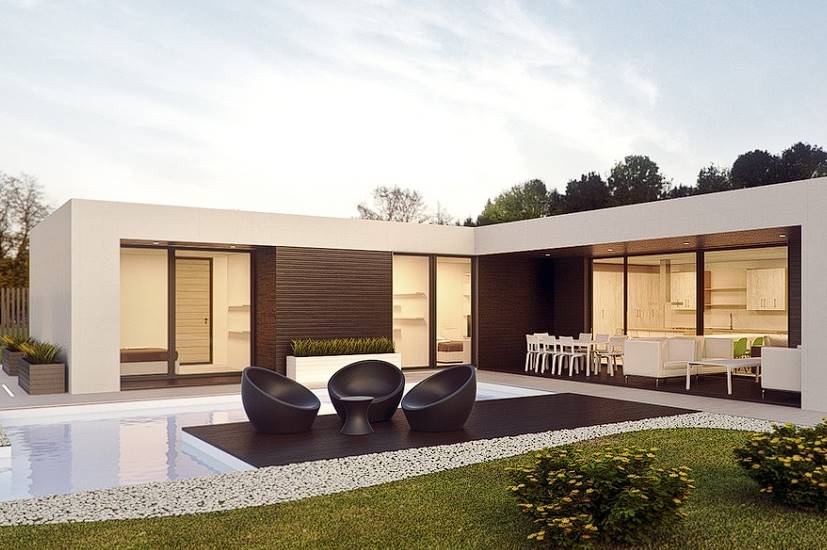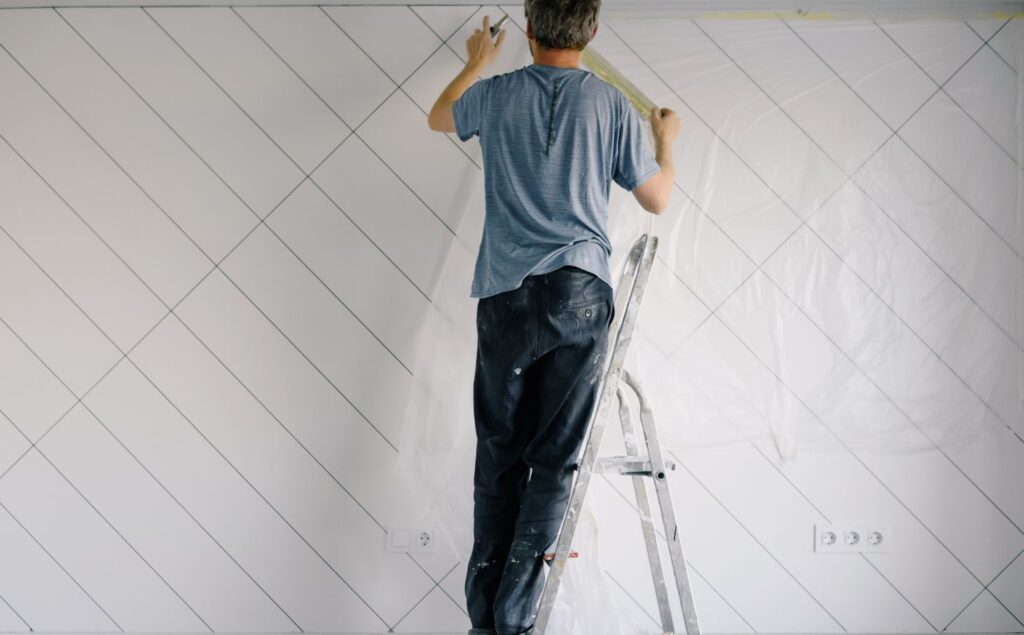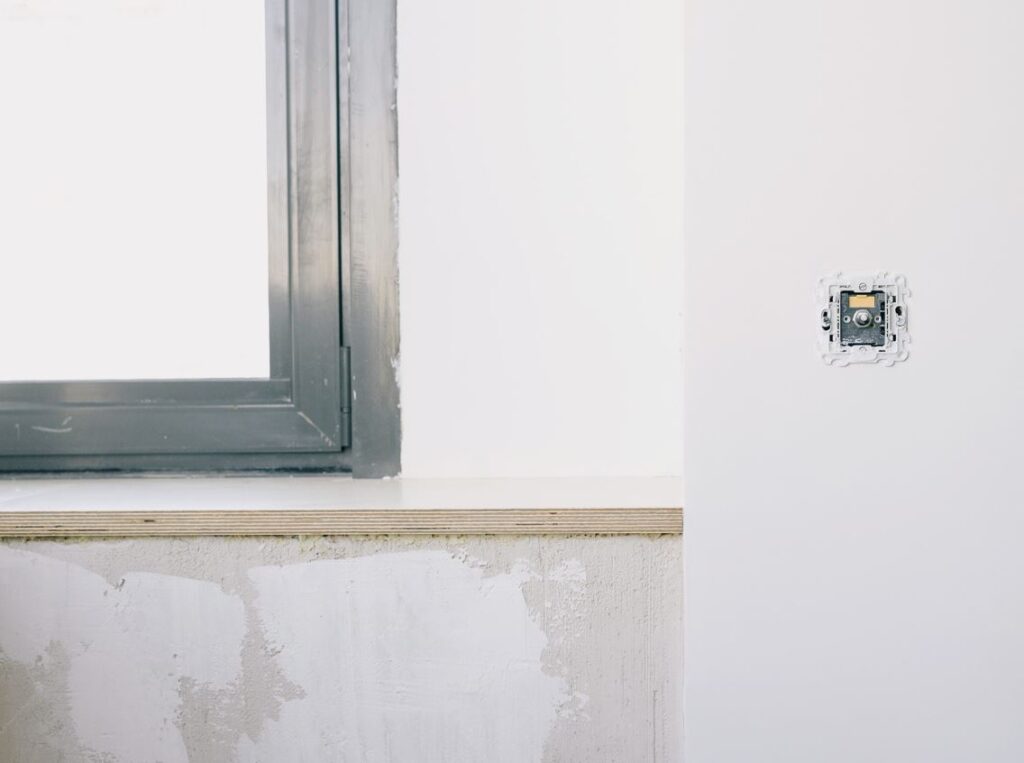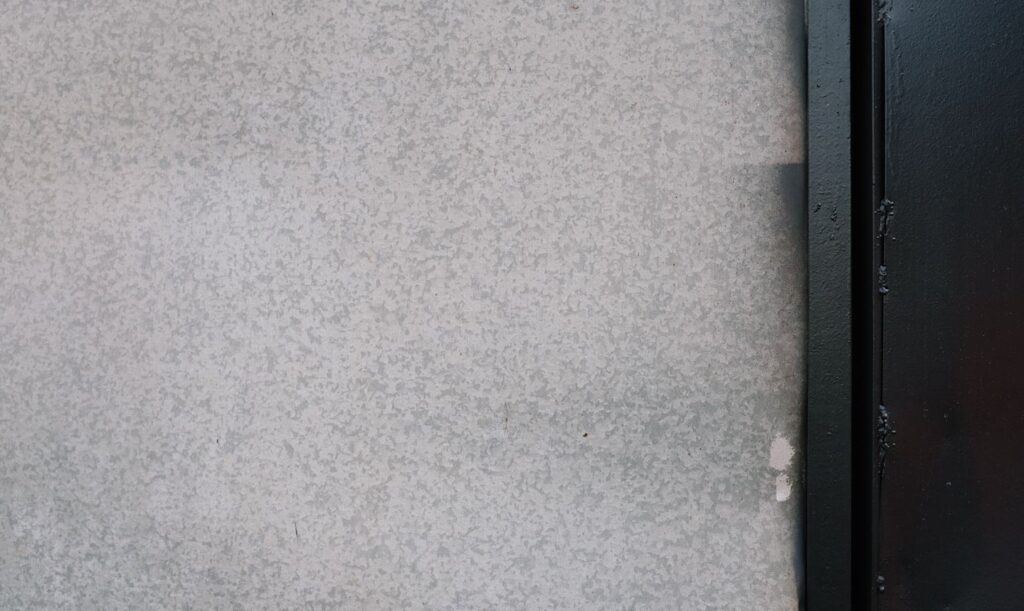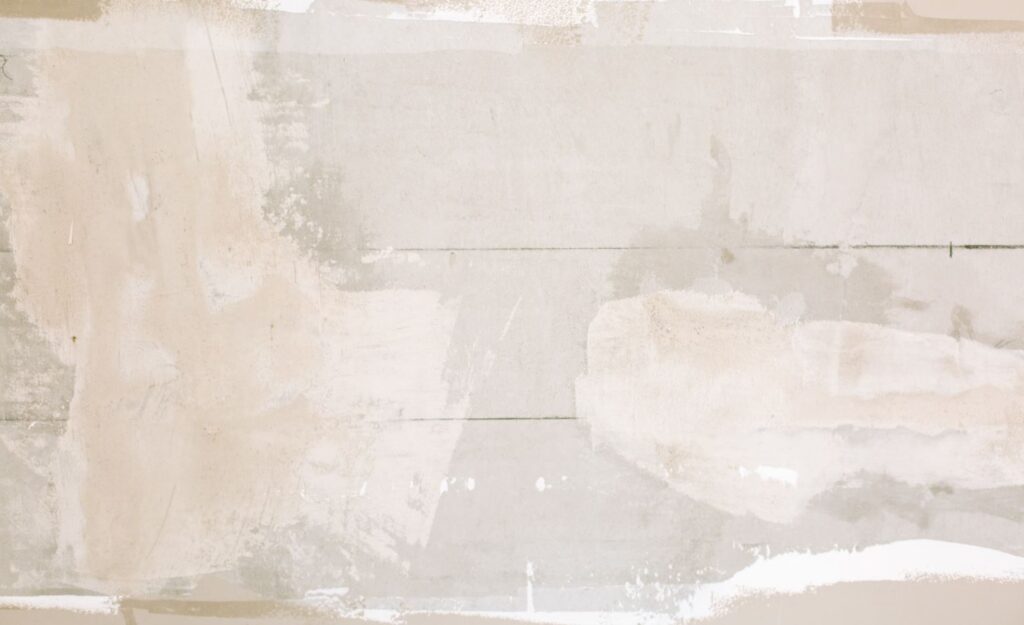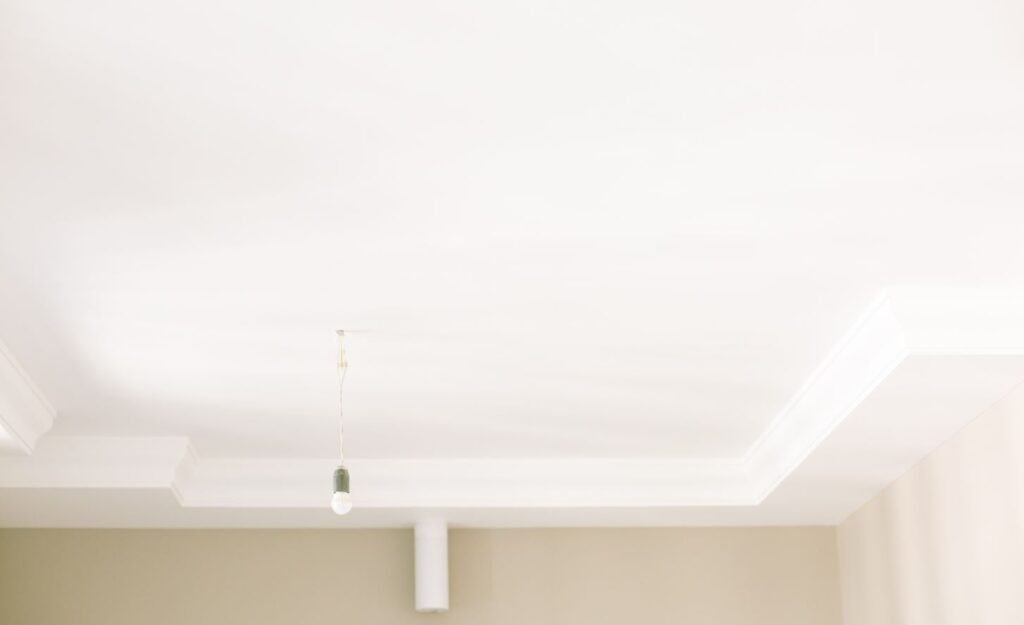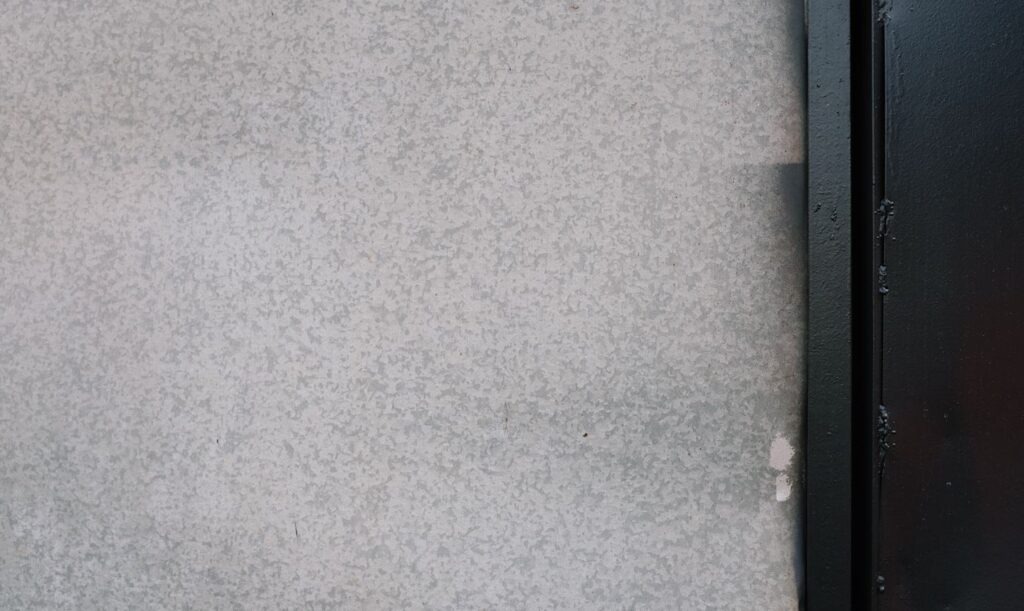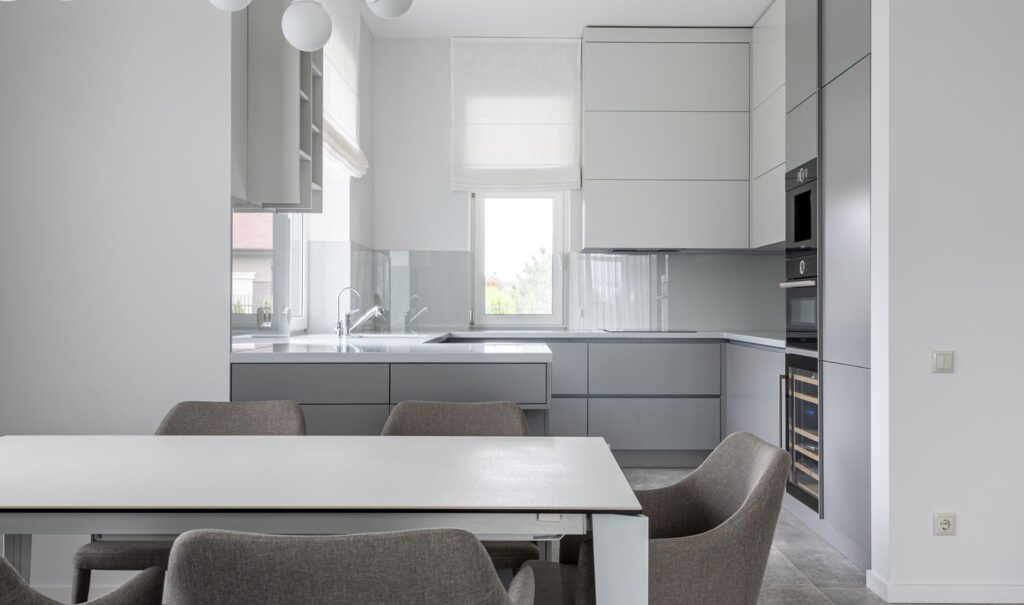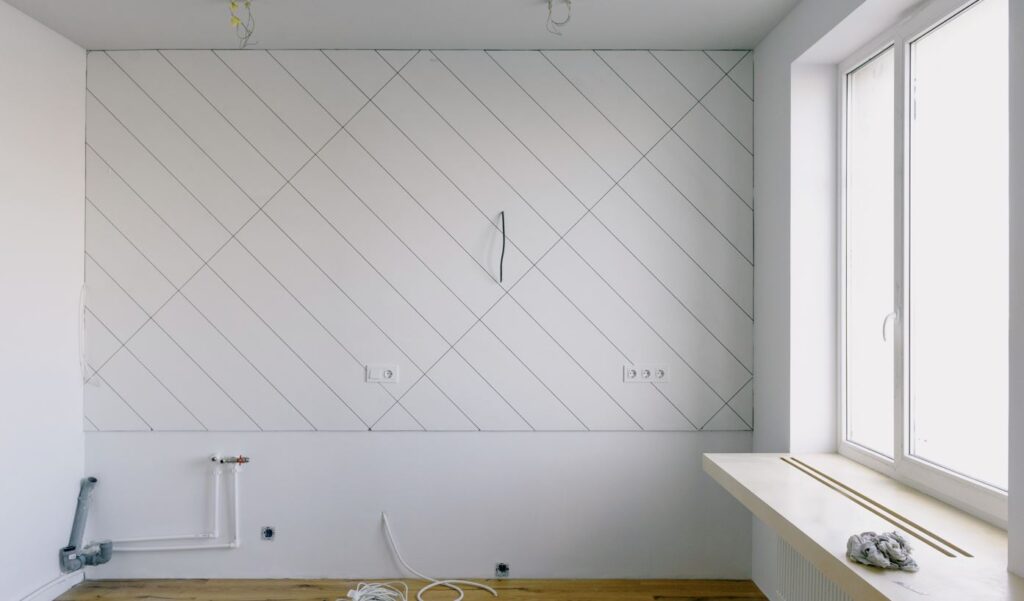The look and feel of any room can be greatly improved by paying close attention to the ceiling design. Plaster ceilings, for example, are an attractive and practical choice. For centuries, homeowners have favoured plaster ceilings for their beauty, adaptability, and longevity. Plaster ceilings can be decorated in countless ways, from adding luxury to a classic room to giving a contemporary space an air of sophistication.
Everything you need to know about installing a plaster ceiling is covered here. We'll go over everything you need to know, including the various options available, how to install them, how to keep them in good condition, and how they stack up against other ceiling materials. This article intends to give you a comprehensive and insightful overview of plaster ceilings, whether you are an architecture enthusiast, an interior designer, or someone interested in learning more about this fascinating topic.
What Is A Plaster Ceiling?
Plaster ceilings are a specific style of ceilings that are built with plaster materials. Plastering the ceiling creates a smooth and decorative surface by applying a mixture of gypsum, lime, or cement.
Plaster ceilings are known for their versatility in design, allowing for the creation of intricate mouldings, patterns, and decorative elements. As a result, they add a touch of elegance and sophistication to traditional and modern architectural styles. In addition, plaster ceilings can be customised to suit various preferences, making them a popular choice in interior design and construction.
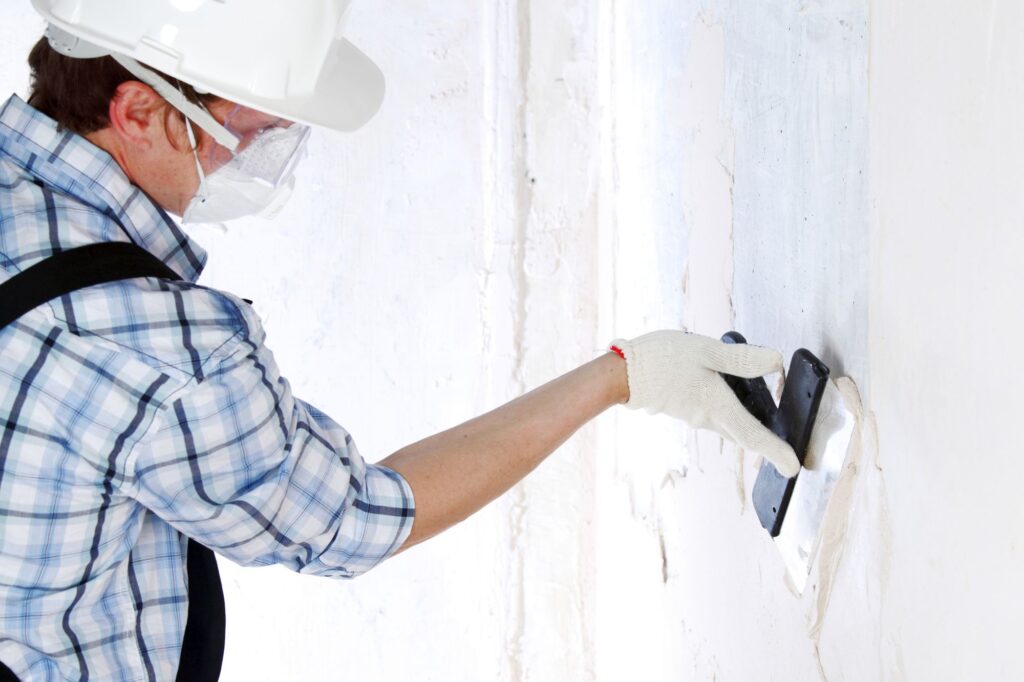
What Are The Different Types Of Ceilings?
Let's start with the various plaster ceiling styles that exist:
Gypsum
Gypsum plasters are known for their durability and ease of installation due to their low weight. In addition to that, they are well-known for their resistance to fire.
Wood
The addition of wooden ceiling pieces provides the ideal amount of cosiness. Hardwood ceilings, however, can be problematic due to expansion and contraction caused by moisture in the air. This could cause the ceiling to warp or crack.
Metal
These ceilings are constructed using one of the materials that are both the most durable and long-lasting available. However, corrosion is a risk when working with this material.
Plaster of Paris (POP)
Ceilings with intricate details or unusual shapes and patterns benefit greatly from this long-lasting material. Compared to sand cement plaster, it is less expensive, but it still costs more than regular cement or cement lime plaster.
Advantages of Modern Plaster Ceilings
There are a number of reasons why plaster ceilings are so commonly used in contemporary residential and commercial spaces.
Conceals Wires
A plaster ceiling is a great place to hide cables strung across the ceiling or along the walls. Another option is lighting that is recessed or otherwise hidden in a plaster ceiling. Because of this, there is no need for additional lighting fixtures or electrical work.
Keeps The Room Warm
This also helps insulate homes in colder climates, which is a huge plus. The additional layer creates a gap between itself and the base layer, which traps air and reduces the temperature of the area. The efficiency of air conditioners is also enhanced. Because it reduces the total area that needs to be cooled, thus cutting down on costs.
An Enduring Quality
Plaster may develop minor stress cracks over time, but these are typically the result of improper installation and can be prevented by getting help from a pro. As a result, plaster is ideal for government buildings, libraries, and academic institutions that will be used by the public and are expected to last for decades or even centuries.
Brings High Ceilings Down
With the help of this improvement, which is purely cosmetic in nature, you will be able to alter the exterior of your home without causing any harm to its structural integrity.
Excellent Acoustics
When another ceiling is installed on top of the existing one, the room's acoustics are greatly enhanced. This makes it a great idea for the decor of rooms where people primarily gather to watch TV, listen to music, or watch movies at home.
Simple To Maintain And Repair
Ceilings made of contemporary plaster are simple to clean and repair if necessary. Regularly cleaning them with a soft brush or cloth will free them from dust and dirt. Plaster is easily patched and repaired to look like new after experiencing minor damage like cracks or chips. The ceiling will always look great and perform well because of how simple it is to clean and fix.
Plaster Ceiling Installation Processes
Plaster ceilings require a few extra steps during installation to ensure a smooth and long-lasting finish. Therefore, an effective installation requires meticulous planning and preparation. Here is a comprehensive guide on how to properly install a plaster ceiling:
Step 1: Preparing The Surface
Getting the ceiling surface ready before putting up the plaster is essential. The first step is to remove the old ceiling and dispose of the old plaster or drywall. The area must be spotless, smooth, and devoid of any dust or dirt. At this point, you should fix any holes or patch any cracks so the ceiling plaster has something solid to adhere to.
Step 2: Base Coat Application
A base coat, or a scratch coat, is applied after the surface has been primed. This coat's rough texture improves the plaster's grip on the surface. Cement, sand, and water are the standard ingredients in the first coat. Then, using a trowel, it is spread evenly across the ceiling in a uniform layer.
Step 3: Plaster Sheet Installation
Plaster sheets are installed onto the surface after the base coat has dried. Lightweight and simple to work with, plasterboard is the material for these sheets. Sheets are measured and attached to the ceiling using either screws or nails. Taking your time to ensure the sheets are aligned and securely fastened to the ceiling is essential.
Step 4: Adding Decorative Elements
Plaster ceilings allow for the incorporation of decorative elements if so desired. Cornices, mouldings, and medallions are all examples of architectural embellishments that serve this purpose. Following the manufacturer's instructions, adhesive or screws are used to secure the decorative elements to the plasterboard. It is crucial to pay close attention to alignment and symmetry at this stage to achieve a visually pleasing outcome.
Step 5: Finishing And Final Touches
The final coat is applied after the plaster sheets and embellishments have been set in place. The skim coat, also called the top coat, is the final layer of plaster used to finish a project. Troweling the skim coat on in small sections helps ensure an even coating. We pay special attention to fixing surface flaws or unevenness during this phase. Once the skim coat has dried, a light sanding will reveal a smooth, uniform surface.
Step 6: Refinishing And Painting
The installation process is complete when the plaster ceiling is painted and refinished. After the plaster has dried and cleaned of dust, it can be primed and painted. Paint designed for plaster surfaces is recommended for optimal adhesion and durability. The look of the plaster ceiling can be improved with further refinishing methods like glazing or texture application.
How Do Professionals Plaster A Ceiling?
Wire lath installation on the ceiling, followed by applying a plaster bonding agent and a scratch coat, is the gold standard and is best left to the pros.
A scratch coat is applied first to ensure the brown plaster stays on the ceiling. After applying the plaster coat, make marks all over the ceiling by scratching at it with a tool. The following day, you can apply a brown coat of plaster using your hawk and trowel. The final step is to apply a "white" coat of plaster and smooth it out using the same technique.
Things To Think About Before Installing Plaster Ceiling Design
Ceiling Plastering Materials
The boards used to make a plaster ceiling are made of gypsum or casting powder bound together with fibres. Normally, these boards are fastened to a framework made of wood or aluminium. They're malleable and can take on a variety of shapes. It can also be layered to produce new results.
These plasterboards are standard sizes and can be cut to fit the width of your ceiling. Plaster was once substituted with asbestos.
The Interval Space
This is something you should discuss right away with the contractor. The minimum distance that should be left between the old ceiling and the new plaster ceiling layer for cassette air conditioning units is 35 centimetres.
If you plan on putting in something other than cassette air conditioners, you should still ensure there's enough space for any pipes, wires, or vents that might need fixing one day. Distances can be minimised if no obstacles stand in the way.
Adding Lights
You can make your plaster ceiling look more modern and chic by installing in-ceiling lighting that is not visible. They can be set around the outside, but more commonly, they are set above the main forms. LEDs, which can be found in a rainbow of colours, are frequently used for these covert illuminations. In most cases, you'll see white, off-white, warm white, or cold white lights. These are the way to go if you want to set a relaxed yet refined mood.
Alternate colour schemes can be tried to see if they produce a more interesting or unexpected ambience. For example, you could install discrete spotlights in the ceiling's plaster instead of covertly strewn track lighting.
The Height Of The Ceiling
A room with a low ceiling can feel even more claustrophobic and cramped than it already does. Therefore, chandeliers, ceiling fans, and other similar fixtures should also be accounted for.
Ceiling Painting
Ceilings made of plaster are painted once they have been finished. While white is a common choice, other colours may also be used depending on the room. For example, to make a room look bigger, use light colours instead of dark ones.
If you want to give your room a more regal atmosphere, you can cover the plaster ceiling with wallpaper or fabric, just like you would the walls.
Can A Do-It-Yourselfer Plaster A Ceiling?
DIYers can succeed in plastering a ceiling, but the process is challenging. Plastering over your head is significantly more difficult than plastering on a wall or spare piece of drywall, so we recommend first practising on a wall or spare piece of drywall.
It's easy to paint a ceiling yourself, though you might have a stiff neck. A second set of hands makes executing any other ceiling design ideas much simpler, such as wallpapering or texturing. Make sure to set aside significantly more time than you would normally for tackling a wall. Taking frequent breaks is essential when working on a ceiling.
Plaster Ceiling Vs. Other Ceiling Types
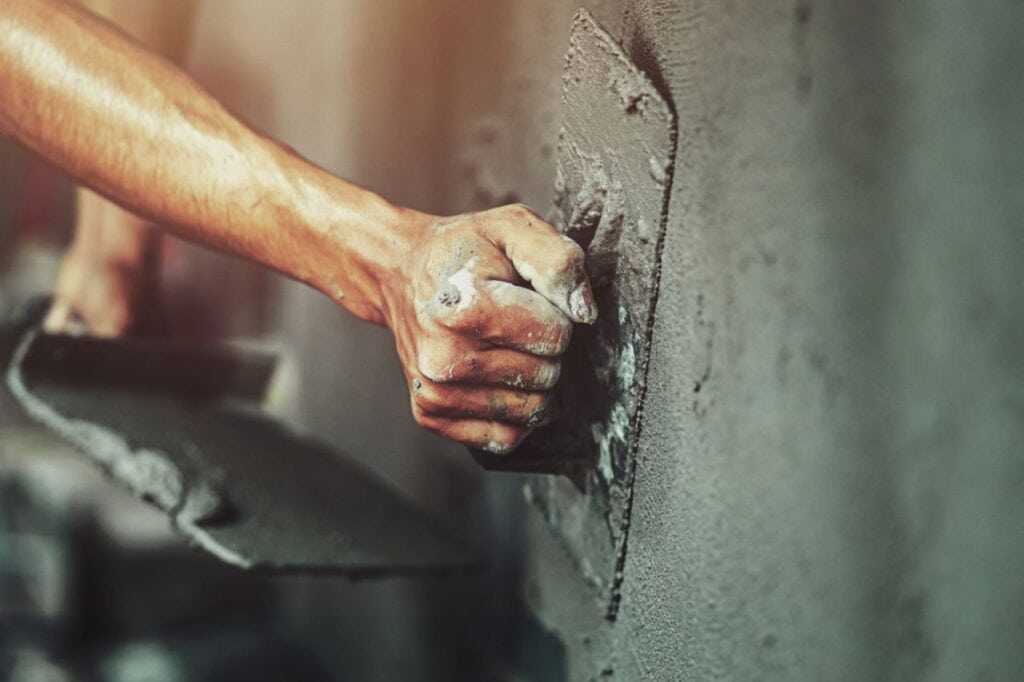
It's important to do some research and compare options before settling on a ceiling material for your room. Some benefits and distinctions set plaster ceilings apart from other options. Let's look at how plaster ceilings vary from some other popular choices:
Plaster Ceiling Vs. Drywall Ceiling
Popular options include plaster and drywall, both of which have their advantages and disadvantages.
Plaster Ceiling:
- Plaster ceilings are classic because they can be decorated with a wide variety of details.
- With care and upkeep, they provide exceptional service life.
- The soundproofing and insulating qualities of a plaster ceiling are second to none.
- Plaster ceilings look beautiful but take time and expertise to install properly.
Drywall Ceiling:
- When compared to plaster ceilings, drywall ceilings are much easier and cheaper to install.
- They make for an easily finished, uniform surface.
- Repairs may be necessary over time because drywall is easily damaged by water, impact, and settlement.
- Drywall ceilings are less insulating or soundproof than plaster ones.
Plaster Ceiling Vs. Wooden Ceiling
Ceilings made of wood are inviting and classic. So let's compare them to standard plaster walls and see how they fare.
Plaster Ceiling:
- Ceilings made of plaster can have a variety of textures and patterns applied to them.
- When cared for properly, they offer exceptional longevity and durability.
- Plaster ceilings are highly effective at reducing noise and maintaining a comfortable temperature.
- Trained experts can only install plaster ceilings.
Wooden Ceiling:
- Wooden ceilings add a natural and rustic feel to any space.
- They add character and warmth to the interiors.
- Ceilings made of wood may need to be refinished or sealed every so often to protect them from water and pests.
- They are more versatile in terms of design, and they might need to improve at insulating or blocking out noise as plaster ceilings would be.
Plaster Ceiling Vs. Drop Ceiling
Drop ceilings, sometimes referred to as suspended ceilings, are a standard feature of many workplaces. We can liken them to plaster walls and ceilings.
Plaster Ceiling:
- Plaster ceilings are highly regarded for their aesthetic value and versatility in design.
- They have great longevity and can be kept in good condition for decades.
- A plaster ceiling has excellent acoustic and thermal properties.
- Plaster ceilings, on the other hand, can be expensive to install and require the expertise of a professional.
Drop Ceiling:
- Installing a drop ceiling is simple; once it's up, it's easy to run wires and plumbing.
- They are adaptable and allow for easy adjustments to be made to things like lighting and airflow.
- Drop ceilings are functional rather than aesthetically pleasing and come in fewer design options than plaster ceilings.
- Compared to plaster ceilings, they may be less effective at blocking noise or keeping heat in.
Conclusion
The aesthetic appeal, versatility, and durability of plaster ceilings make them a popular option for residential use. They are versatile in terms of design, lending an appearance of refined elegance to either a traditional or modern setting. Plaster ceilings can be modified to fit any design scheme because they are manufactured from a combination of gypsum, lime, or cement. Plaster ceilings come in a variety of materials, such as gypsum, wood, metal, and Plaster of Paris (POP).
Concealing wiring, keeping the space warm, insulating homes in colder areas, improving acoustics, and being simple to maintain and repair are just few of the many benefits of today's plaster ceilings. They require little maintenance beyond the occasional dusting with a light brush or wipe down with a clean cloth. Repairing minor damage to a plaster ceiling is a breeze.
It is important to plan and prepare well before beginning the installation of a plaster ceiling. Surface preparation, base coat application, plaster sheet installation, embellishment installation, finishing touches, and painting are all part of the process. Installing wire lath is a common practise for contractors, who then apply a bonding agent to the plaster and a scratch coat.
In conclusion, plaster ceilings are a functional and adaptable option for homes of any era. They have many uses, including as hiding cables, retaining heat, improving sound quality, and facilitating repairs. When you want to give a room a contemporary and stylish feel, plaster ceilings are a great option. You can build up the layers of gypsum or casting powder to make different patterns. Pipes, wires, and vents need at least 35 centimetres of clearance between the old ceiling and the new plaster ceiling layer.
It's possible to put LEDs or other kinds of coloured lighting in the ceiling. The ceiling height is also important because a room with low ceilings feels much smaller.
When painting a plaster ceiling, lighter colours are more popular. Using fabric or wallpaper can create a more aristocratic feel. Plastering a ceiling is a tough DIY project. It's best to get some experience on a wall or scrap of drywall before attempting the ceiling.
In addition to their classic appearance, soundproofing and insulating properties, ease of installation, and durability, plaster ceilings also have a few drawbacks to consider. Drywall ceilings are more convenient and inexpensive to install, but they also need more upkeep and repairs. Wooden ceilings are beautiful and rustic, but they may need annual refinishing or sealing. Suspended or drop ceilings are a common fixture in many offices due to its practicality and attractive design. However, installation can be pricey and time-consuming.
Content Summary
- Plaster ceilings are a popular choice for improving the look and feel of any room.
- They have been favoured by homeowners for centuries due to their beauty, adaptability, and longevity.
- Plaster ceilings offer countless decoration options, from adding luxury to classic rooms to providing sophistication to contemporary spaces.
- They are built using a mixture of gypsum, lime, or cement, creating a smooth and decorative surface.
- Plaster ceilings are known for their versatility in design, allowing for intricate mouldings, patterns, and decorative elements.
- They add elegance and sophistication to traditional and modern architectural styles.
- Plaster ceilings can be customised to suit various preferences, making them popular in interior design and construction.
- Gypsum plasters are durable, lightweight, and resistant to fire, making them a preferred choice.
- Wood ceilings provide a cosy atmosphere, but they can be prone to warping or cracking due to moisture.
- Metal ceilings are durable and long-lasting, but corrosion can be a concern.
- Plaster of Paris (POP) is a long-lasting material that is suitable for intricate details and patterns.
- Modern plaster ceilings have several advantages, including concealing wires and enhancing room insulation.
- Plaster ceilings can help reduce heating costs by trapping air and creating an additional layer of insulation.
- They have an enduring quality and are ideal for public buildings expected to last for decades or even centuries.
- Plaster ceilings can alter the exterior appearance of a home without compromising its structural integrity.
- They offer excellent acoustics, making them suitable for rooms where people gather to watch TV or listen to music.
- Plaster ceilings are easy to maintain and repair with simple cleaning and patching techniques.
- Preparing the surface is essential before installing a plaster ceiling, including removing old ceiling materials and fixing any imperfections.
- Applying a base coat improves the plaster's grip on the surface and creates a smooth foundation.
- Plaster sheets are installed onto the surface using screws or nails, ensuring they are aligned and securely fastened.
- Decorative elements like cornices and mouldings can be added to plaster ceilings for enhanced aesthetics.
- The final coat, known as the skim coat, is applied to achieve a smooth and uniform surface.
- Refinishing and painting the plaster ceiling completes the installation process, with priming and using paint designed for plaster surfaces.
- Professionals often use wire lath installation and apply plaster bonding agents for a durable finish.
- DIYers can plaster a ceiling with practice, but it is more challenging than working on walls or drywall.
- Considerations before installing a plaster ceiling include choosing the right materials and ensuring sufficient space for fixtures like air conditioning units.
- In-ceiling lighting can enhance the modern look of a plaster ceiling, with options for different colours and moods.
- The height of the ceiling should be taken into account when selecting fixtures like chandeliers or ceiling fans.
- Plaster ceilings are typically painted, and light colours can make a room appear larger.
- Wallpaper or fabric can be used to cover a plaster ceiling for a regal atmosphere.
- Plaster ceilings have different benefits compared to drywall ceilings, including better soundproofing and insulation.
- Wooden ceilings offer a natural and rustic feel but may require more maintenance than plaster ceilings.
- Drop ceilings are functional but offer fewer design options and may be less effective at blocking noise or insulating compared to plaster ceilings.
- Plaster ceilings have excellent aesthetic value and versatility in design.
- They have great longevity and can be kept in good condition for many years.
- Plaster ceilings provide excellent acoustic and thermal properties.
Frequently Asked Questions About Plaster Ceiling
The average lifespan of a plaster ceiling can vary depending on various factors such as maintenance, environmental conditions, and the quality of installation. Generally, a well-maintained plaster ceiling can last several decades or even longer. With proper care and periodic inspections for any signs of damage or deterioration, a plaster ceiling can retain its beauty and structural integrity for a considerable period. However, it's important to note that over time, natural wear and tear or changes in the environment may require repairs or renovations to ensure the longevity of the plaster ceiling.
Yes, a plaster ceiling can be installed in a bathroom. However, it is important to consider a bathroom environment's unique conditions and requirements. For example, bathrooms are exposed to moisture and humidity, which can affect the durability of a plaster ceiling. To mitigate this, it is recommended to use moisture-resistant materials and proper ventilation in the bathroom. Additionally, regular maintenance and prompt repairs of any water leaks or damage are crucial to ensure the longevity of the plaster ceiling in a bathroom setting. Consulting with a professional contractor or an experienced installer can provide valuable guidance on installing a plaster ceiling in a bathroom and ensuring its suitability for the specific conditions of the space.
To clean a plaster ceiling, following a gentle and careful approach is important to avoid damaging the delicate surface. Here's a simple guide on how to clean a plaster ceiling:
- Start by removing loose dust or debris using a soft-bristle brush or a vacuum cleaner with a brush attachment. This will help prevent scratching the surface while removing loose particles.
- Fill a bucket with warm water and add a small amount of mild, non-abrasive detergent. Mix it gently until the detergent is dissolved.
- Dampen a clean, soft cloth or sponge in the soapy water mixture. Squeeze out any excess water to avoid saturating the plaster.
- Clean the plaster ceiling by gently wiping the surface with a damp cloth or sponge. Work in small sections, using light, circular motions.
- If you encounter stubborn stains or marks on the ceiling, try using a slightly stronger solution by mixing equal parts of water and vinegar. Apply this solution to the affected area using a cloth or sponge, and gently blot or rub the stain.
- After cleaning, rinse the cloth or sponge with clean water and wring it well. Use a damp cloth to remove any soap residue from the ceiling.
- Once the cleaning is complete, allow the plaster ceiling to air dry naturally. Avoid excessive heat or direct airflow, which can cause the plaster to crack or warp.
Yes, you can install lighting fixtures on a plaster ceiling. Plaster ceilings provide a sturdy and stable surface for mounting various lighting fixtures. Whether you want to add a chandelier, pendant lights, recessed lighting, or track lighting, a plaster ceiling can accommodate these fixtures.
Yes, a plaster ceiling is suitable for both residential and commercial spaces. Plaster ceilings offer a versatile and elegant solution that can enhance the aesthetic appeal of any interior. Whether it's a cosy home or a professional office, plaster ceilings can complement various architectural styles and design preferences.

